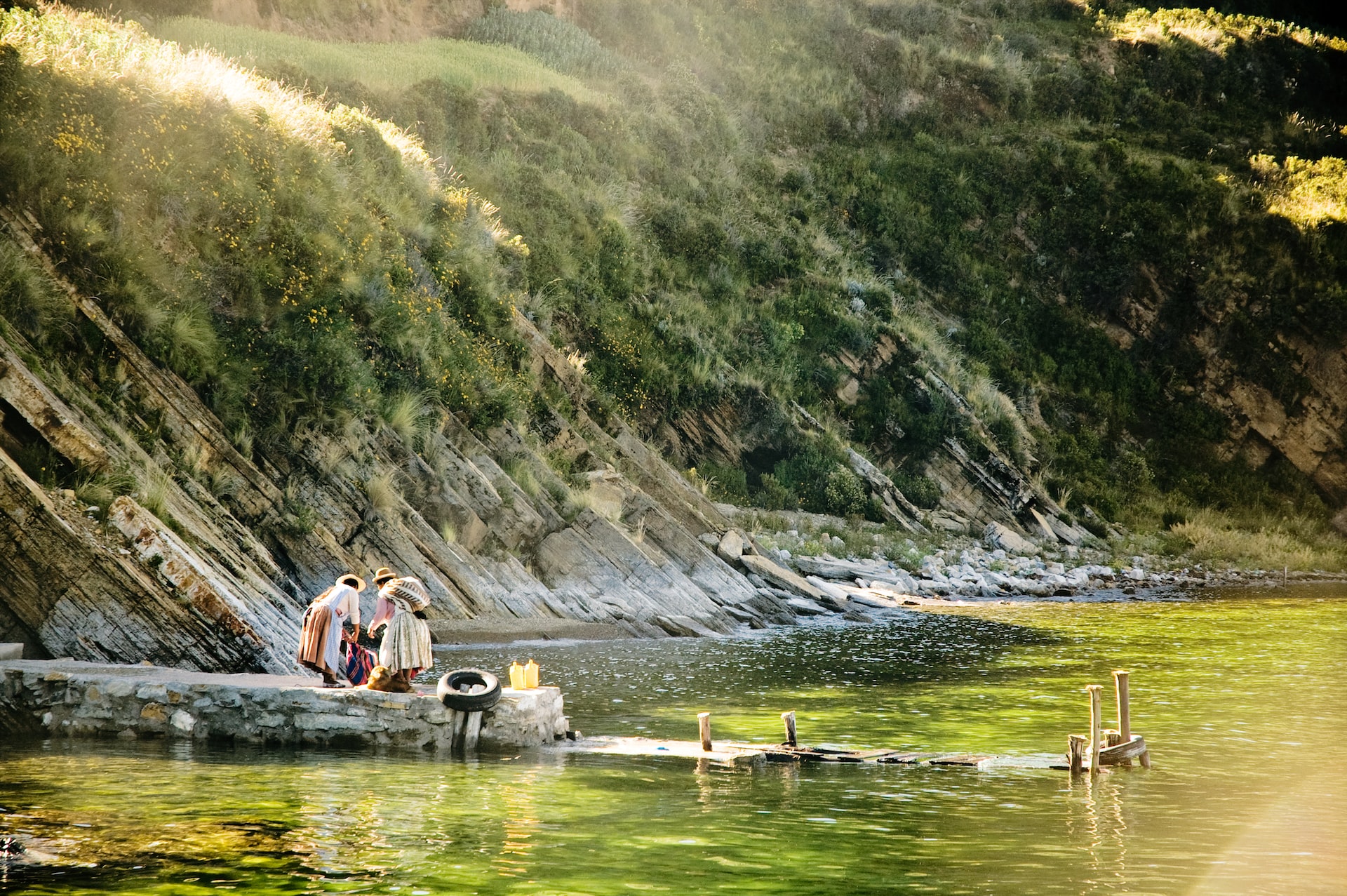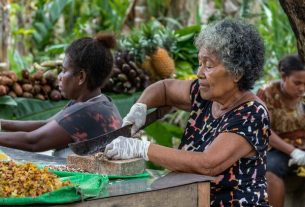In Bolivia, 24,000 farmers in cooperation with communities and public water suppliers protect more than 600,000 hectares of forest from deforestation, exploitation, and the interests of mining companies—and thus protect the regional water supply in the long term. The Reciprocal Water Agreements (ARAs) are now considered a model for conservation in South America: more and more ARAs are being signed in Peru, Colombia, Ecuador, and Mexico. How do this agreement work?
Fourteen years ago, María Gutiérrez bought a piece of land in Alto Espejo, Santa Cruz, Bolivia. She now lives right next to the forest. There are a few fruit trees in her garden and a small river runs through it. The river provides her and her animals with drinking water. She sells the lemons, oranges, and tangerines. María lives from this.
For a few years now, she has been making her own honey. Since then, María’s life has become easier, earning an extra 5,000 to 6,000 Bolivianos (about $800) a year. She got the bees, the boxes, and the harvesting equipment from Natura Foundation. An NGO that promotes biodiversity and sustainable water management. In return, María signed the Reciprocal Water Agreement (ARA).
María is one of 24,000 farmers who have signed such an agreement. Together they protect 600,00 hectares of forest from deforestation, pollution, and the interests of large mining companies.
What is a Recipocal Water Agreement (ARA)?
The “Recipocal Watter Agreement” (Acuerdo Recíproco por Agua) is a contract between the people in the countryside, the people in the city and the public water suppliers. In short, a contract between all the people who live in the same watershed or share the same water source. Basically, it’s a cooperative effort to protect the natural water cycle for the long term. Everyone works together and benefits.
The idea behind it is simple:
- Farmers and rural people protect their forest and receive incentives for doing so: e.g., access to running water or help in growing fruits.
- The incentives are paid for by the communities and the end users through a small fee, in exchange for sustainable and clean drinking water in the long term.
- Water suppliers expand their network and provide flowing water to the farmers.
Definition: What are Reciprocal Watershed Agreements?
“Reciprocal Watershed Agreements—known as ‘Watershared’ in South America—are simple grassroots versions of conditional transfers that help land managers located in upper watershed areas to sustainably manage their forest and water resources in ways that benefit both themselves and downstream water users.” (Nigel Asquith)
Natura Foundation takes care of the contracts and contributes to the financing of the individual projects at the beginning. The contribution is around 20 percent, so that the projects remain affordable for everyone even after a certain period of time has elapsed.
Incentives: running water, a beehive, or a basin for fish farming
Access to running water is the biggest incentive, Teresa Vargas, executive director of Natura Foundation, told Mongabay. That’s because many of the farmers who live outside villages and towns are not yet connected to the piped water system.
Depending on what helps local people the most, however, the incentives can be quite different: a beehive, for example, or help with growing citrus fruits or raising fish.
The cost of the incentives is borne by the water suppliers, their customers, and the communities. The water suppliers, in turn, lay the pipes and bring the flowing water to the farmers. In the end, everyone benefits: nature is protected, the farmers get an additional income or flowing water and the people in the region have sustainable and clean water in the long term.
Municipalities, water suppliers and end-users:pay jointly for incentives
Municipalities pay about one percent from tax revenues and 0.5 percent from the budget they receive from the central government. End users contribute either one Boliviano per month ($0.15) or an agreed percentage. Everything is done simply and without bureaucracy, directly through the water bill. The important thing is that no one is forced. The contracts and cooperations are voluntary.
Depending on the contract, different amounts are collected and managed in a common fund. For 8,000 to 9,000 consumers, this would amount to about half a million Bolivianos (about $72,000). Natura Foundation also pays into the fund. With the standard contract term of 10 years, they only pay about 20 percent at the end. As a result, the project continues to function even after the contract expires and the NGO leaves. The fund can always be used to finance new incentives. And so, bit by bit, the area of protected forests grows.
Protection for nature: 23 nature reserves in 20 municipalities—an area of 3.4 million hectares
The ARAs as water protection areas are a successful model. Politicians in Bolivia are now also interested in them—for two reasons:
The water suppliers in Bolivia are organized in cooperatives or in public companies. The government is therefore responsible for the water supply. What you get here is a concept that is already working in many communities and has more and more supporters.
Bolivia is one of the poorest countries in Latin America and suffers greatly from the consequences of the climate crisis. But climate change is abstract—lack of or polluted drinking water, on the other hand, is a reality. The issue affects everyone and brings people together.
Inspired by the success of these water protection areas, more and more local governments are protecting their forests. In the last 10 years, 23 protected areas have been created in 20 municipalities as a result. That’s 3.4 million hectares of forest by not disturbing the natural water cycle.
The model is now considered a model for conservation in South America, with more and more ARAs being completed in Peru, Colombia, Ecuador, and Mexico.



